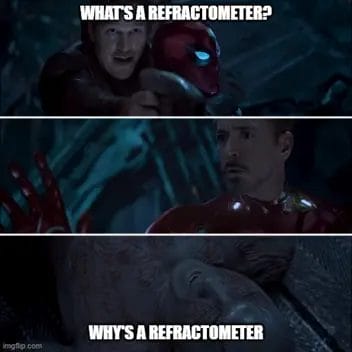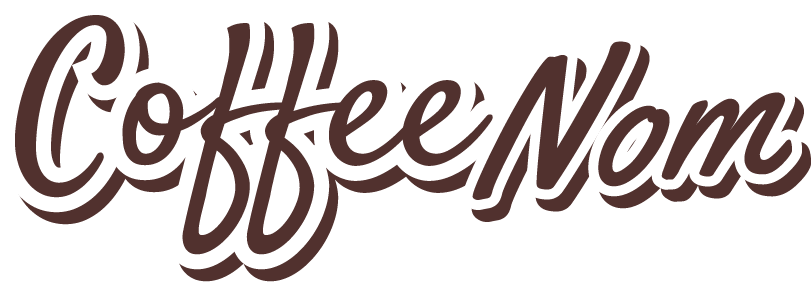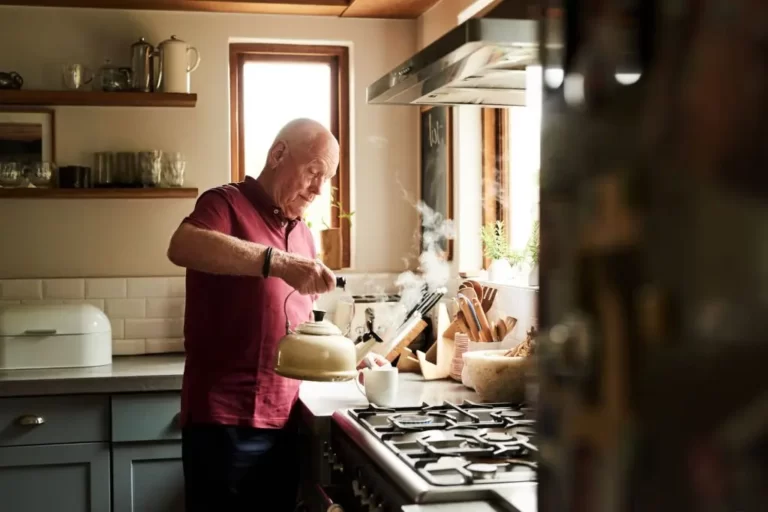A good cup of coffee is a liquid hug for the brain. It turns the “leave me alone” into “Good morning, honey.” You may not be lucky enough to make a satisfying morning coffee every day. But, ordering your favorite coffee in a coffee shop sounds awesome. But relying on baristas for serving your magical nectar is not always a good idea, especially taking the current world into perspective. But, how about learning some fascinating coffee making tips?
Though coffee shops are slowly opening up, why would you want to leave the comfort of your home when you can make your coffee as good as the baristas near you?

Whether you are a beginner or a trainee, these coffee-making tips for a better cup of coffee are more simple than you think. Follow these tips for making coffee at home to level up your coffee game.
Bean Is the Key (Coffee Making Tips)
The key to making a delicious cup lies in the bean itself. Fresh and high-quality beans take a cup of home coffee to the next level. Go for pure Arabica coffee, even though they are more expensive. The premium quality Arabica beans will indeed make a brew to touch your heart.
After roasting, the compounds that are in the coffee beans escape through the degassing method, which causes the grinds to lose their flavor over a long period.
To experience the ultimate delicacy, try buying freshly roasted whole beans and grinding them yourself just before brewing. Then, purchase your coffee in an amount enough for 2 to 3 weeks before bringing in another fresh batch.
Bean’s Creed: Origins
Now that you have selected your beans, find out the origin of your beans. Knowing the origin of your beans will give you an idea of what kind of flavor you may get when you grind or brew your coffee.
African coffee beans are dark and acidic; coffee from South America is less dark and is considered a medium roast. If this is too much information for you to process, a personal suggestion would be to start with Guatemalan coffee.
Produced in Central America, Guatemalan coffee has the right balance of all elements and is considered medium roast coffee. Therefore, it’s a perfect start for a beginner.
Storage Tips (Coffee Making Tips)
Air is the archenemy of coffee beans. Store the beans in an airtight container for maximum freshness. Roasted beans deteriorate faster when oxygen from the air comes in contact with them. It not only degrades the flavor but also leaves you with stale coffee.
Buy from specialty roasters to lessen your worries. They provide coffee in an airtight package that has degasser valves. Also, keep the storage container where sunlight can’t reach it, and the storage place is cold and dry.
If you manage your storage pots, always use a ceramic or glass container and keep them out of sunlight.
Freezing your coffee can sound like a good solution. Still, the freezing process absorbs the moisture in your coffee, which can affect the taste and quality of the coffee when you de-freeze it again for brewing.
Grinding Tips (Coffee Making Tips)
Rule of thumb: always avoid pre-ground beans. It’s better to grind your own before brewing. Though it can take some time out of your day, the result is worth the wait.
Without proper grinding, the aromas don’t escape the beans. That way, they stay on your shelves instead of being in your cup.
Invest in buying a great burr grinder. A good quality grinder makes your effort fast and painless. Both types of grinders make it easy for you to control the particle size of your grind. So, you are left with a consistently precise grind size each time. And do not grind anything else in your coffee grinder.
Use the right grinding size for the brewing methods you prefer. For example, never use fine grinds for a French press or percolator. However, you can use fine grinds for pump or steam espresso machines. On the contrary, a regular household coffee maker requires a medium grind.
The surface area of finely ground coffee is higher than coarse coffee grounds, which allows for extracting more flavor notes accounting for coffee’s bitterness. A coarser grind gives you a light and sweet brew.
Hey, Check our piece on types of coffee roast. You’ll love it.
Tips To Choose A Burr Grinder
As Burr grinders maintain the consistency of the grind, it’s better to use a burr grinder to get the best of grinds and a fresh cup of coffee with all its taste intact. Here, we got a few tips on how you can choose a burr grinder fitting your needs:
- Manual Vs. Electric: Manual grinders require more effort, but they are great if you want to grind in smaller quantities. On the plus side, they are portable and cheaper as well. Electric grinders may cost you a pretty penny, but they get the job done too. Many keep both handy for different occasions. The final choice is up to you.
- Consistency: Blade grinders give you a grind that is inconsistent and chunky. A chunky grind ruins the coffee taste when burr grinders provide finer grounds. Consistent coffee grounds are the key to a better cup of coffee, no matter the bean type. Considering that, a burr grinder is a better choice, let it be manual or electric.
- Grind settings: If you wish to try every possible brew style out there, you need more than 40 settings on your grinder. Instead of relying on the numbers, decide if you want to brew all of them or stick to more traditional brews. Then choose your grinder. You need at least 20 settings if you’re going to get the bare minimum done.
- Where Does It Grind Into?: Some grinders grind into a portafilter, and others into a bucket. Here, your choice depends on what you want to brew the most. For example: if you are brewing espresso, a portafilter can be handy. Otherwise, it’ll just get in the way when you’re cleaning your grinder.
- RPM: We’re getting into technical territory here. Higher RPM grinders can grind fast, but they produce heat that can ruin the grind’s quality. Lower RPM grinders are more consistent. However, high RPM grinders with large burrs can finish grinding before the heat has a chance to build up at all.
Use The Right Roast (Coffee Making Tips)
Ever felt the rich, appealing aroma of freshly roasted beans? Nothing compares to its taste. These soul-touching smells will allure you to crave a cup of java. So always purchase newly roasted beans. And if you cannot find the roasting date on the package? Buying it is out of the question.
What about the degree of roasting? Bring the medium roasted beans. That is the safest option. Lightly roasted beans are for you who love mild and bright coffee. It is a lot closer to nature. While dark roast beans are for those, who enjoy the bitterness in the mug.
Say No To K-Cups!
No, these are not the cups you are thinking of right now

Many automatic brewing systems have risen in popularity recently. Honorable mention goes to Keurig K-cups. But it’s time to retire your Keurig cause there are more downsides to it than just relatively lousy coffee.
K-cups are expensive, which should be convincing enough. But even worse, k-cups aren’t environmentally friendly. It’s so bad that even the inventor of the k-cup has their fair share of regrets.
Even if we look past all that, k-cups don’t make decent coffee, to begin with. Furthermore, it ignores a lot of tips we mentioned here for quality improvement, such as water temperature, coffee-to-water ratio, etc.
Avoid Old Coffee (Coffee Making Tips)
Never leave your coffee on the burner or coffee pot. Doing so leaves a sour aftertaste in your coffee, which is also less effective.
Another worse practice is reheating old brewed coffee in the microwave. Suppose you have leftover coffee instead of reheating the thing. In that case, it’s better to keep the coffee in the freezer and enjoy iced coffee later.
Just like coffee, remember not to reheat milk as well, whether you are using your espresso machine, a steam wand, or even the microwave.
Stay Away From Cheap Coffee Filters
There are coffee filters with varying qualities on the market. However, please don’t settle for bargain bean filters, as they affect the overall taste of the coffee a lot.
Many experts suggest that filter papers affect the overall taste of the final cup of coffee. So going for cheap papers is not an option.
The best two types of paper filters available are either “Oxygen bleached” or “dioxin-free” filter papers. Another option to consider is a gold-plated filter. Still, it might let out some coffee ground into your cup if your coffee is too finely ground.
Grind Your Coffee According To Your Need
Though grinding a more considerable amount altogether is a better idea, it creates issues in the long run, as ground coffee loses flavor over time. But you already knew that.
Take a measured guess of your daily intake after a couple of grinds, and grind accordingly. Only grind the amount you want to consume, so there’s no leftover grind after your brewing process.
That way, you save both coffee and its taste while making your current brew smell and taste fantastic.
Keep Your Grinder Consistent
And that doesn’t mean keeping the same settings for different grinds. For example, you may need to grind other spices and materials at home for cooking purposes, but use a separate grinder for those.
Your coffee grinder should only grind the coffee and nothing else. Because many spices leave a strong trace of taste and smell in the grinder, some of which don’t go away even when you take your grinder apart and clean it all.
This taste gets mixed up with your coffee grind and results in a sour/lousy-tasting coffee. To avoid it, use a dedicated grinder for your coffee grinds only. But don’t forget to clean that one either.
Pre-Brewing Rituals (Coffee Making Tips)
Good beans, right roast level, good grinder.

Pre-heat everything that’ll come in contact with the brew. That includes brewing equipment, an espresso machine, and also filter paper.
And yes, you need to do this every time to ensure the quality of life improvement is added to your morning cup.
Rinse the paper filter with boiled water. This process also drains out the paper flavor you do not want in your cup.
If you use an espresso machine, do not forget to purge the water before brewing. Doing so washes out the residue water from the wand that could make your coffee stale.
Use Pure Water
Water is essential for coffee. But don’t just add any water to your precious coffee. The odors and taste from the water get transferred to your drink. Use bottled water in case your tap water contains any type of impurity.
The freshness of the water is essential for the final product. Every time you have leftover water that you boiled previously, replace it with fresh water.
Always avoid using water that is already boiling. Instead, cool down the boiled water a little before adding it to the pour.
Set The Right Temperature
The ideal water temperature for coffee brewing is between 195-205o F. with cooler water; you may end with under-extraction. With higher temperature water, the coffee can taste burnt and spoiled.
Use pure, fresh, and heated water at the right temperature for a perfect cup. You will be able to observe a remarkable difference in the taste of your cup of joe. Keep a thermometer handy in the kitchen to avoid the nightmare of spoiled, burnt coffee.
If you plan to use milk with your coffee, heat your milk to 140oF for a perfect brew. Milk temperature affects the coffee as much as the water temperature.
Use Cold Water (Coffee Making Tips)
“But you just told us to use the right temperature of hot water! So make up your mind already!”
I know I did, but hear me out.
When you use cold water for your coffee brew, the cold water brings the maximum taste out of the beans. You can use cold water to bring out the flavor, then use your coffee maker to warm it up for you.
Neat trick, am I right?
Don’t Forget To Bloom!
When you pour water over fresh coffee, you can see bubbles coming up on the water. This phenomenon occurs from CO2 being released by the coffee grounds and is known as bloom.
Pre-existing CO2 can affect the taste of your coffee. So before you start brewing, add a small amount of water, and wait around 30 seconds for the bloom to happen before adding more water.
If you’re confused about how much water you should use for blooming, it’s always double the amount of coffee you have present in your cup.
Having fun Nomies? Check out our piece on types of black coffee.
Saturate Your Coffee
Make sure your coffee doesn’t stay dehydrated! When adding water, make sure all your coffee grounds are soaked in one go and do not leave any dry coffee residues. It can affect the overall taste.
The best way to make sure of it is to give the cup a light stir with a teaspoon when adding water after the blooming process.
Creamy Milk (Coffee Making Tips)
If milk gets spilled, I don’t mind. But if coffee gets spilled, I lose my mind!
Yet, milk is a crucial ingredient for making delightful lattes and cappuccinos. The best milk for making coffee is full-fat milk. The fat gives texture and creaminess to the final cup.
Milk also counteracts the bitterness of coffee. Use freshly heated milk each time you brew a cup. Milk that has been heated before adds a nasty smell and bitterness.
A quick tip for milk frothing is to find the appropriate steam tip position. It should be placed not too high, nor too low. If you are a fan of latte art, try learning some. You know, practice makes a man perfect.
Right Amount Of Coffee And Fun
It is very convenient to take two scoops of coffee or eyeball the right amount, which is okay for a good coffee. But if you are into making a barista-style excellent coffee, measure it using a scale.
Differences in bean density and grind size make measuring by volume a wrong concept. A scoop of one coffee may weigh differently from a scoop of another coffee. Therefore, a digital scale serves the purpose best.
Summary: measure your coffee by its weight, not its volume.
Coffee-to-Water Ratio
The amount of coffee used in cups of coffee signifies the strength of the coffee. You can brew a coffee so strong that it will open a jar for you.
Depending on blend types and personal preference, the coffee-to-water ratio varies between 1:12 to 1:30. The fun part is, you can experiment with different combinations until you find the right one.
Get The Stale Coffee Out
A tiny bit of residue gets stuck in the grinding mechanism every time you grind the coffee. When you grind a couple of new beans, it pushes out the stale and old coffee crumbs stuck in the system.
It may sound like a trivial step, but it is very critical in taste. When your fresh coffee grind gets mixed up with old grind, the overall flavor of your coffee loses its integrity.
Plastic Brewers For The Win
Though the idea may sound a bit weird, plastic brewers tend to suck less heat from the water, which can help you maintain temperature consistency when brewing coffee.
When heat is not sucked out of the water, it stays hot longer, and your coffee brew maintains an optimal temperature range.
Tips for French Press
Plunge slowly and avoid moving down to the bottom for all the French press users. Coffee brewed in a French press needs time to settle.
Therefore, do not drink directly after brewing. Instead, give it some moments to sediment the coffee grounds.
Tips For Turkish Coffee
There are a couple of things to take note of when dealing with Turkish coffee:
- Make The Grind Coarser: Turkish coffee has a finer ground, leading to bitterness. To avoid it, make your ground coarser than usual but finer than espresso, making sure you don’t need to deal with unwanted bitterness. Yummy, right?
- Skip Sand Brewers: Sand can get warm pretty quickly, but that doesn’t necessarily make it a perfect conductor of heat. Using sand can cause major variations in the overall temperature of the brew. Sand can also escape into the brewer through the filter to stir the mixture around for proper heating. For Turkish coffee, always go with gas flame heating.
Pour-Over Setup: Secret Of Flavor Extraction
Adjust the height of the water pouring. If water pours from too high up from the coffee bed, it escapes the coffee ground. Also, keep the pouring level stable. Please don’t dance with your water pot, making it raise and lower the water height.
Similarly, pour the water straight on the coffee ground, not on the edges of the filter paper. Again, water flowing and not passing through the coffee bed results in under-extraction.
For better control over the water flow, use a gooseneck kettle. That long, narrow spout eases up your precise pouring. So, you can adjust the spot and amount of water to be poured accurately.
If you are looking towards bringing out the best of your coffee, I suggest investing in the pour-over method.
Keep It Clean
Cleanliness is next to godliness. Clean your coffee grinder regularly to avoid the build-up of the leftover coffee grind. The grind residue leaves an odor on your fresh coffee grounds. Similarly, wash and clean your coffee brewer after each brew.
An espresso machine user should make sure to clean the steam wand after each use. Using a damp cloth, wipe the milk away from the wand tip. Then purge for a few seconds to wash out the residual milk from inside the tip.
Spice Up Your Coffee
You can add several items to your coffee for an extra kick of taste. It can range from chocolate to cinnamon grounds. Sounds weird? But it works!
Chocolate or whipped cream toppings with spices such as cinnamon, nutmeg, etc., can provide extra flavor to your taste buds. Even items like lavender, honey, etc., can add aroma and sweetness to your morning cup.
Try them out with different brews to determine which type of brew is most suitable for the added flavor.
Small tip: always use the spices with the grind BEFORE the brew, not after. Doing so can have adverse effects.
Use Coffee Refractometer For Fine Tuning

A refractometer tells you how much coffee is in your coffee. Confused? Let me explain as simply as possible.
When you input your dose and water-weight information, the refractometer will use the refraction of light to measure how much coffee is infused into the water. Sounds a lot science-y, right?
You can use the refractometer to determine how much coffee you like in a certain type of brew. You can use it as a reference point to experiment with different grinds and brews. Luckily, the device can’t taste the coffee for you. That’s entirely up to your taste palette.
Experiment With Your Brews
Always try out different methods of brewing different types of coffee. Then, when you keep tinkering with the intricacies of the brewing process, you can pick up a trick or two you can implement yourself without our help.
There are hundreds of ways to experiment with the brewing process. For example: add a few grams of coffee more than your usual intake, or let a certain brew steep for more time than you would ideally let it.
Had fun reading? You’ll love to read our piece on strong French press coffee.
Bottom Line
Though many people like to say making coffee isn’t exactly rocket science, you might feel like you are making more of a scientific formula and less of coffee after taking all these precautions.
But all this is to make sure that the start of your day is done the best way possible: with the finest cup of coffee you can produce.
Now that you have learned all the tips and tricks at hand to outperform a barista, go out there and rock the coffee parties with your neat tricks! Just kidding. Stay at home, stay safe, and enjoy the best variation of your preferred morning coffee.
FAQs
Yes, that is called milk-brewed coffee. However, the brewing process is very different. However, it is possible to make cold brew coffee with milk. However, brewing it in a coffee maker would result in a very bitter and bad-tasting coffee.
The best brewing method is a personal preference. However, pour-over is possibly the most famous method for brewing a delicious, flavorful coffee.
You can grind whole bean coffee for your daily needs. Since coffee beans contain the most flavor, grinding fresh whole beans can offer you the most flavor the bean has to offer.
A refractometer is a device that tells you how much soluble coffee you have present in your cup based on the reflection of light and data you previously input into the machine.
Always keep a thermometer in your kitchen. You can sink the thermometer into the water to check if your coffee has reached the optimal temperature for you to process further.


